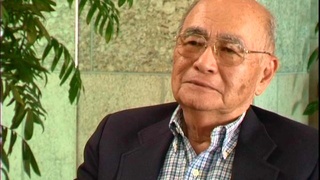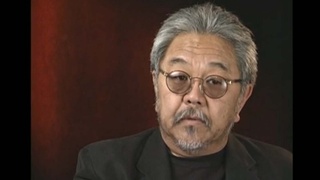Interviews
Reparations
So $20,000 was going to be the price for all surviving people from the camp, you know. And uh so I says okay I'm gonna get that $20,000 and I'm going to spend 18 of it to buy a, a Cadillac, you know. And the $2000 I'm going to use to take the Cadillac out of the sea, you know. And I was gonna drive it over the Pacific Palisades to no, what do you call it, skin diving in Palos Verdes, you know. And but before I do that I'm going to paint graff...on, on the door so this is what four years did. I got paid four years in camp. And I have, I had a lot friends who to this day in the critics, the press, people, you know. I would call them and say I'm going to push...I'm going to drive a Cadillac into the sea, over the cliff. A brand...and a brand new one. Okay would you guys want to see this? You know. And uh and then have them come over with the television station or whatever it is. And I was uh I was gonna do that and walk away. [Laughter] And I just told this to my wife - and we didn't have much money then and she said God no, don't do that, please we need the money. The whole thing we gave it up.
I*: But you didn't want the redress money?
No, no I mean I wanted it but I, I didn't like what it stood for. And even to this day when the money came, $20,000 is not much because we just had to pay off some people we owe. We never even saw that money. So in some ways I didn't see it, you know. We had a debt to be paid off you know. So uh it just went from one pocket to another, you know.
* "I" indicates an interviewer (Chris Komai).
Date: June 29, 2012
Location: California, US
Interviewer: Chris Komai, John Esaki
Contributed by: Watase Media Arts Center, Japanese American National Museum












